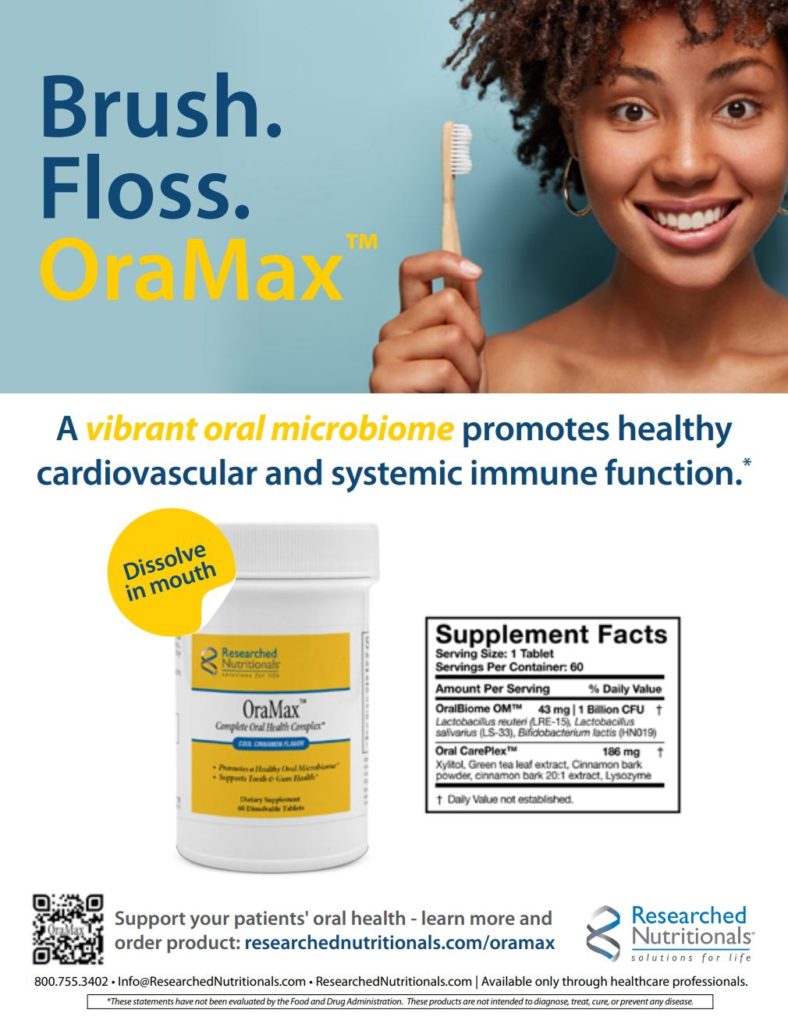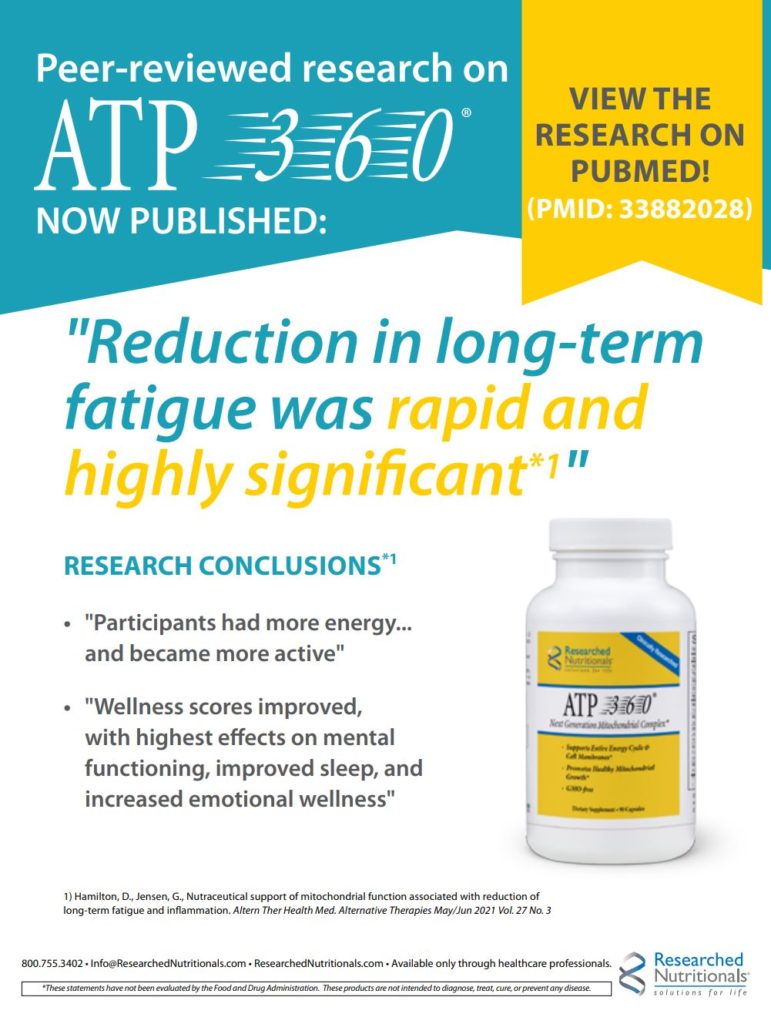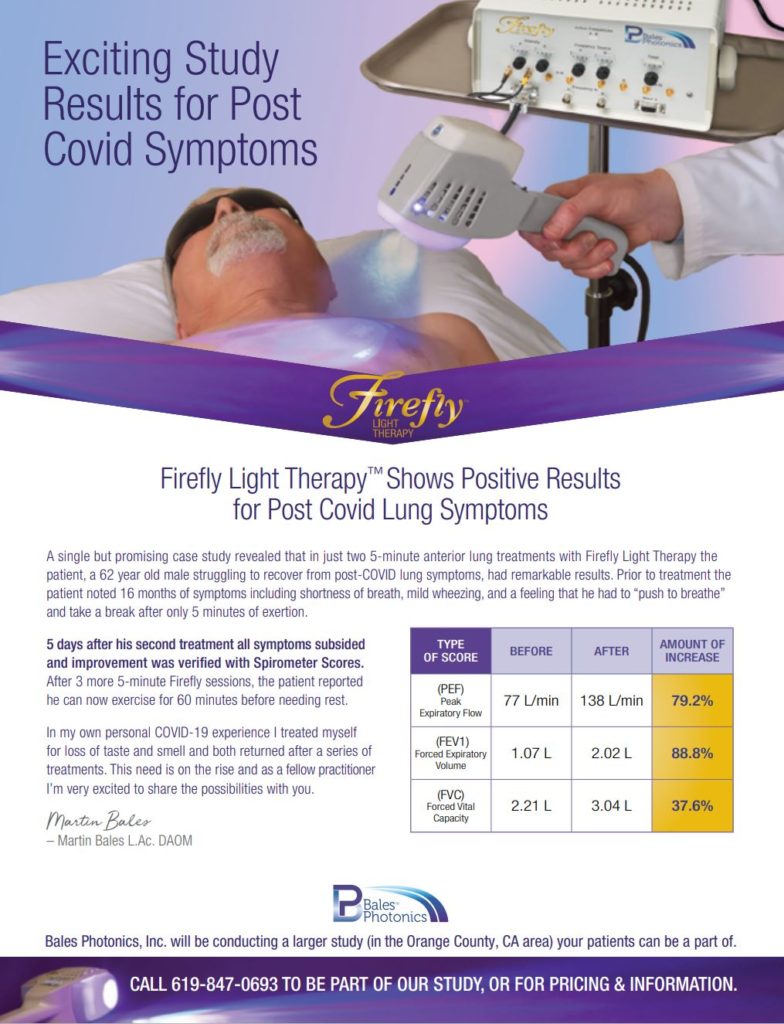By Heather Hannon, MSN, RN, ANP-BC
This article is provided courtesy of Heather Hannon, MSN, author, and Judson Brandeis, MD, and it is adapted from
a chapter in The 21st Century Man, a comprehensive new men’s health resource. (Dr. Brandeis is volume editor.)
Larry James was diagnosed with prostate cancer in his late fifties. His cancer had been detected at an early stage, and he underwent successful surgical treatment that rendered him “cancer free.” Larry wasn’t overly worried, but his physician expressed concern after reviewing the family history. Larry’s mother and maternal grandmother had died of advanced breast cancer. He knew the disease was more common in the women in his family but wasn’t sure how this applied to him. Still, he wanted to optimize his health and decided to opt for genetic testing, which involved collecting a small amount of saliva by having him spit into a test tube. Not the most refined approach to obtaining a sample, but it didn’t hurt, and it got the job done.
Larry’s test results revealed he had inherited a harmful genetic change (a mutation) in the BRCA2 gene, a gene responsible for protecting the body from cancer. His test results indicated he was at increased risk of developing several types of cancer, including male breast cancer, and his doctor immediately sent him for a screening mammogram. Larry was shocked when his mammogram showed early-stage male breast cancer. He credits genetic testing with saving his life because the test results played a role in detecting his risk and subsequently his breast cancer before it had reached a more advanced stage. That enabled him to escape the premature deaths of his mother and grandmother.
As a nurse practitioner who has provided genetic counseling and testing for more than eight years, I have witnessed firsthand the powerful impact this testing can make in the life of someone such as Mr. James. Genetic testing offers the opportunity to identify individuals who are at the highest risk, enabling them to lower that risk dramatically by detecting cancer at an earlier stage when outcomes are better.
Only about 1 in 400 individuals in the United States has an inherited BRCA gene mutation like Mr. James’s. (The prevalence is higher, about 1 in 40, among individuals with Ashkenazi Jewish ancestry.) However, as with many things in life, genetic risk is not black and white; rather, it exists on a spectrum. The key to unlocking our health is in understanding where we fall on that spectrum and addressing the risks that matter most.
The Nature of Genetic Material
In a sense, DNA resembles sophisticated computer code that provides commands to make proteins. These proteins are the instructions for traits such as eye color and blood type as well as the information that enables our cells to carry out the functions that maintain life. DNA is made up of four different nucleic acids, referred to as base letters or bases, designated by four letters: A, T, C, and G. These nucleic acids combine in countless ways to form amino acids, the building blocks of protein. When scientists sequence a genome, they “read” the gene to determine the exact order of DNA letter bases (As, Ts, Cs, and Gs) contained in that individual’s genetic code.
Genes are small snippets of DNA, comprised of letter bases that are passed down from our parents. We inherit two copies of every gene (one copy from our mother and one from our father) for every trait or function. Frequently a particular attribute or function will be defined by a number of different genes. There is usually not just one single gene for cancer or for allergies, for example, which might enable us to crack the code on these conditions.
Genetic Expression
Gene expression is the process by which the written code in DNA is translated by the body into biochemistry, such as a protein. Not all genes, or commands, are expressed at once. Gene expression is tightly regulated so that only specific genes are “turned on” in a cell while others are silenced or “turned off.” This explains how heart cells are able to perform different tasks than the cells in our lungs and our brain, even though they share the same DNA. It appears that triggers from other cells (including hormones and neurotransmitters) can influence gene expression. Externally, exposure to environmental hazards, nutrition, social conditions, and the aging process itself can help determine which genes are turned on or off.
Although our DNA is around 3 billion bases long, only 1% is composed of genes that make proteins. Researchers used to think that the remaining 99% of our DNA was junk, but it appears these nonprotein-making regions help regulate the expression of the protein-making genes by turning them on and off.
If you lined up all of your DNA, it would form a strand 6000 miles long. To fit inside a tiny cell, DNA is tightly packaged inside chromosomes. Human beings have 46 chromosomes or 23 pairs, but chromosomes contain thousands of genes. We have approximately 25,000 genes. Our genes vary in size in terms of the amount of information they contain, from as small as a few hundred DNA base letters to more than a million DNA bases.
How Genes Affect Risk
Individuals do not inherit a disease—they inherit the risk for developing the disease. It has been suggested that changes in lifestyle can prevent at least four of every ten cancer cases. Research indicates that as high as 15% of men with metastatic prostate cancer have a hereditary mutation, so genetic testing is now recommended for all men with this cancer, regardless of age. Men with a Gleason score of 7 or higher should talk with their doctors about genetic testing, especially if members of their family have had breast and/or ovarian cancer. For these men, standard detection and treatment strategies may need to be adjusted due to their higher risk level.
The Impact of Genetic Changes
Understanding genetic changes helps identify a person’s level of risk and focuses efforts to address that risk effectively.
Genetic mutations. Specific changes that alter the usual sequence of DNA letter bases that make up a gene are termed genetic mutations. Most gene mutations are not harmful but rather are an aspect of the evolutionary process. However, a small percentage of mutations alter how a gene functions, resulting in proteins that don’t work correctly or are missing entirely. When a genetic mutation affects a protein that plays a critical role in maintaining our well-being, that mutation can increase the risk of a given disease. Sometimes the BRCA1 and BRCA2 genes are referred to as the “breast-cancer” genes. This is a misnomer because all of us have two copies of each of these genes. It is the presence of a mutation in a BRCA gene that raises the risk, not the genes themselves.
Acquired mutations. Acquired mutations can occur spontaneously when a mistake is made during cell division. These mutations are acquired over the course of a lifetime and are present only in specific cells in the body. Researchers estimate that individuals accumulate trillions of new mutations in a typical day, but most of these mutations are not located in areas of DNA that have significant consequences. However, the accumulation of multiple acquired mutations in a gene that protects against cancer or heart disease has the potential to disrupt normal gene function and contribute to disease risk. This helps explain why people with no known risk factors can be diagnosed with a severe illness even though they did “everything right.”
Environmental factors can trigger acquired mutations, due to air pollution, exposure to radiation, and/or lifestyle factors (such as smoking, alcohol, an unhealthy diet, or a sedentary lifestyle). We can protect against certain diseases by addressing the lifestyle and environmental factors that trigger acquired mutations and contribute to developing these conditions. Almost 25% to 30% of cancer-related deaths are linked to tobacco use and 30% to 35% are linked to diet.
Hereditary mutations. Inherited mutations are passed down from one or both parents and, like other genes, remain throughout life. Inherited mutations are present in every cell in the body, including reproductive tissue. (Egg and sperm cells are called germ cells; hence reproductive mutations are also referred to as germline mutations.)
Hereditary diseases. Conditions associated with inherited mutations can cause significantly increased disease risk. Most hereditary diseases are inherited from just one parent. This has important implications. It means that an individual only has to inherit one copy of a mutant gene to be at increased risk for the associated hereditary disease. It is possible to inherit a gene for a particular risk from either parent.
Childhood risk. When the parent has a dominant hereditary mutation, each child has a 50% chance of inheriting the mutant gene from an affected parent. Many hereditary mutations raise risk substantially. Lifestyle and environment are still critical tools for lowering risk, but risk associated with hereditary mutations may require additional strategies. Individuals with the highest level of risk may benefit from specialized screening tools and more frequent screening, like an annual breast MRI for detecting breast cancer early or specific medications for controlling blood pressure and harmful cholesterol in the case of inherited cardiac disease.
SNPs—genetic glitches. Single nucleotide polymorphisms (SNPs) represent a change in a single DNA letter base and are found in stretches of DNA between protein-making genes. Both SNPs and hereditary mutations are inherited, but SNPs are much more common in the population.
- There are roughly 10 million SNPs in the human genome (and around 400 genetic mutations).
- Although SNPs have a minimal effect on raising disease risk, inheriting multiple SNPs may combine to increase disease risk to a significant level.
- SNPs may underlie genetic susceptibility to common diseases and have been linked to a range of disorders from addiction to mental illness, from high cholesterol to obesity, and from lactose intolerance to inflammatory bowel disease.
The presence of particular SNPs may cause the same level of risk as an inherited mutation would cause. Specific SNP profiles (such as polygenic risk scores) may warrant targeted screening and prevention tools similar to individuals with a known inherited mutation, such as BRCA genes.
Epigenetic changes. Epigenetic changes alter genetic expression, influencing biological development, in contrast to mutations that alter the sequence of DNA bases. Epigenetics reminds us that adopting healthy lifestyle choices can make a difference in optimizing health across our lifetime.
Protective behaviors. The following behaviors are believed to protect against adverse epigenetic changes:
- Maintaining a healthy weight
- Eating a healthy diet, one that is high in fiber and fresh fruits and vegetables with less processed food and meat
- Getting regular exercise
- Using sunscreen and covering up while out in the sun
- Avoiding smoking and tobacco products
- Limiting or avoiding alcohol
- Avoiding exposure to harmful chemicals in the workplace.
Evaluating Risk
Recent literature suggests that around 20% of us have an inherited mutation linked to a genetic condition.
Knowing family history. The health history of your family remains one of the most valuable tools we have for helping to predict risk. Individuals with several family members or relatives who have a particular condition are often at higher risk for that condition. For example, children of someone with an alcohol abuse disorder are four times more likely to develop problems with alcohol than people in the general population.
Red flags. Look for red flags in your family and personal history that might indicate an inherited genetic condition. Families are likely to share familiar environments and lifestyles, as well as genes. Don’t forget to look at both sides of the family. (Holiday gatherings provide an excellent opportunity to connect with multiple relatives at once and learn more about what conditions “run” in the family.)
Checklists. A checklist can serve as a simple tool to help tease out genetic risk. Have you or anyone in your family:
- Been diagnosed with a disease at an earlier age than the condition typically occurs?
- Been diagnosed with a rare condition?
- Had multiple family members (on the same side of the family) diagnosed with the same disease?
- Been diagnosed with or had several family members with multiple types of the same disease (i.e., breast and ovarian cancer)?
Individuals who are adopted or unsure about family history may benefit from genetic testing and should also talk with their doctor about the results.
Myriad Genetics—myRisk test. This is a brief, easy-to-use quiz for evaluating hereditary cancer risk that is available online at https://www.hereditarycancerquiz.com/.
Cancer and heart disease checklists. Hereditary cancer and hereditary heart disease checklists are provided online at www.TheTwentyFirstCenturyMan.com.
Risk models. A person’s probability of carrying a specific cancer-related gene mutation can be estimated using a risk model. For example, BOADACIEA, BRCAPRO, and PENNII are different models that estimate the probability that a woman carries a BRCA mutation. The PREMM5 model looks at the probability an individual carries a hereditary mutation associated with Lynch Syndrome (a condition that significantly raises the risk for multiple cancers). About 1 in 200 individuals has Lynch Syndrome, although many do not realize it. This particular model is appropriate for both females and males. Visit https://premm.dfci.harvard.edu/ for more information of the PREMM5 model.
Direct-to-Consumer Testing
Two common types of genetic testing utilized for health risk screening are direct-to-consumer tests (DTCs, such as 23andMe and AncestryDNA), as well as professional genetic testing that looks at genes associated with specific hereditary conditions that can cause harm.
The first sequencing of the human genome was completed in 2003 at a cost of $2.7 billion. Today, less than 20 years later, you can have your genome sequenced for $200.
What about 23andMe? 23andMe and AncestryDNA are examples of direct-to-consumer genetic tests that can be purchased online and in stores. DTCs have increased in popularity as the cost of testing has fallen. DTCs provide information on ancestry and health traits. Many DTCs are now expanding to provide information about a person’s health risks as well, including (but not limited to) conditions such as:
- Parkinson’s disease
- Alzheimer’s
- Celiac disease
- Gaucher disease type 1
- Early-onset primary dystonia
- Alpha-1 antitrypsin deficiency
- Blood and blood clotting disorders (hereditary hemochromatosis, hereditary thrombophilia, Factor XI deficiency).
Benefits and limitations. Consumers should be cautioned that not all the genes identified in DTC testing are actionable. The consumer may be left with a result that indicates higher risk for developing a serious condition, such as Alzheimer’s disease, and have no proven way to lower their risk or prevent the disease.
Results can sometimes be misleading. For example, 23andMe can screen for the three most common BRCA gene mutations, but the test is not FDA approved to look for the remaining 1,000 plus BRCA mutations that can raise cancer risks. An individual may believe they are not at risk when they really are.
- DTC tests usually do not involve a healthcare professional and do not provide guidance regarding whether you are testing for the appropriate genes. Also, DTC tests do not offer counseling concerning what the results mean and the implications of those results.
- Most DTCs use third-party interpretation (TPI) tools (such as Promethease, GED Match, and Livewello) to interpret raw DNA data and convert it into information about health risks. But TPIs don’t fall under the same guidelines as other genetic testing types, and ensuring the quality and accuracy of the information obtained through a TPI is difficult.
- Different DTCs and TPIs have varying privacy policies. Remember to ask what steps the lab takes to protect your privacy and how long your sample is kept. However, this does not mean that DTCs don’t have a useful role.
Benefits of direct-to-consumer testing include the following:
- A good starting point for talking with your doctor
- Results that can prompt individuals to make substantial lifestyle changes they otherwise might not have considered, had they not had the test
- Accessibility and affordability for most people
- Provision of health-related testing that is not offered through other genetic testing laboratories.
Professional Genetic Testing
Genetic testing ordered by physicians is typically comprised of actionable genes that are associated with defined, evidence-based medical recommendations. These tests focus on genetic expression, so the recommended lifestyle changes, when implemented, have been shown to improve outcomes, including reduced illness and mortality. Genetic testing currently available for conditions like heart disease and cancer offers “actionable results,” providing information that doctors and nurses can act on in guiding the prevention, detection, and treatment of these conditions. Actionable genes are those with a harmful mutation that could potentially be addressed by medical intervention (some type of treatment supported by evidence of improved outcomes). By way of example, at least 1 in 200 individuals has an inherited form of heart disease that can result in sudden cardiac death. While all of us can benefit from adopting healthy behaviors to enhance heart health, individuals with an inherited form of heart disease most certainly want to consider specific lifestyle interventions, such as engaging in regular exercise and avoiding smoking, alcohol, caffeine, and high-fat foods.
Understanding gene-related risks. There are too many inherited genetic mutations and corresponding syndromes to list individually in this chapter. Your family and personal history serve as a guide to some degree for illuminating hereditary conditions and relevant inherited mutations that you might have and do not yet realize. Understanding your specific gene-related risks can help you create a personalized plan to optimize your health. Some hereditary mutations raise disease risk dramatically, while others have only a modest effect. For example, inheriting a mutation in the MSH2 gene is associated with a 52% to 82% lifetime risk of colorectal cancer, while inheriting a mutation in the PMS2 gene is associated with only a 15% to 20% lifetime risk of colorectal cancer. Depending on the degree of risk a gene mutation confers, we might recommend different or more frequent screening options (e.g., colonoscopy annually vs. every three years). Additionally, hereditary mutations can contribute to the development of multiple conditions. FH gene mutations, for example, can raise the risk for kidney cancer and uterine fibroids in women and managing risks means implementing strategies to address each condition.
- BRCA2 mutations have important implications for men and raise the risk for more than one cancer. Men with a BRCA2 mutation have a higher risk of prostate, male-breast, and pancreatic cancer, as well as melanoma.
- Men with a BRCA2 mutation will want to consider earlier, and more frequent screening for prostate cancer (starting in their early- to mid-40s), annual skin checks with a dermatologist, and annual clinical breast exams.
- Pancreatic cancer is a deadly malignancy because it rarely causes symptoms until it is in an advanced stage (and survival rates for advanced pancreatic cancer is in the single digits). But screening to catch pancreatic cancer early does exist, and research using this approach for those individuals with the highest-risk level is showing promising results. Early detection can mean the difference between a predicted 80% chance of survival at five years or a 5% survival rate.
Emerging science. Some genetic variants are linked to raising risk for serious conditions. The APOE gene is a good example of this, and it is important to discuss this in more detail.
- The APOE gene is responsible for packaging cholesterol and maintaining healthy levels within the body. There are three different versions of the gene: e2, e3, and e4. APOE e3 is the most common version of the gene found in the population.
- Inheriting the APOE e4 version is associated with raising a person’s risk for developing Alzheimer’s disease.
- People who inherit one copy of APOE e4 have approximately a 20% to 25% risk of Alzheimer’s disease by age 85.
- A person who inherits two copies of APOE e4 has approximate a 30% to 35% risk of Alzheimer’s or higher by the age of 85. There is speculation that being born with two copies of APOE e4 may also lead to slightly earlier onset of the disease.
Not everyone with two copies of the APOE e4 variant will develop Alzheimer’s, and upwards of 50% of patients who develop Alzheimer’s are negative for APOE e4. Additionally, there is no proven way to cure Alzheimer’s disease, and sometimes finding out one carries the e4 version of the APOE gene can lead to more anxiety, not less. More importantly, this information could cause problems for people trying to obtain long-term care insurance.
However, researchers believe that changes in the brain occur several years before the first symptoms of Alzheimer’s are evident. This indicates a potential window of time when one might be able to intervene to protect against the disease. The MIND diet (a combination of the DASH and Mediterranean diets) has been linked to cognitive benefits and is being studied as an effective intervention to prevent or delay Alzheimer’s. Additionally, steps such as controlling blood pressure and engaging in regular exercise and certain types of “brain training” activities have shown promise in preventing and slowing the disease. Thus, test results can serve as a powerful motivator to change or enhance certain lifestyle choices. Anyone with a strong family history of Alzheimer’s who is concerned about developing the disease may want to consider adopting a healthy lifestyle.
Working with a Genetics Professional
Understanding the risks and limitations of genetic testing can help you make thoughtful, informed decisions. Genetic testing can help you:
- Find out if you are at increased risk for a certain condition
- Create a personalized screening plan leading to early detection and better outcomes
- Adopt lifestyle strategies known to reduce risks
- Make informed decisions about medical and surgical options for reducing risks
- Protect family members by helping them identify and manage their risks
- Lower anxiety and fear about the risk of developing a specific health condition
- Guide decisions about biopsy, surgery, and medications
- Determine follow-up care for a specific disease
- Expand treatment options for advanced diseases, opening doors for targeted therapy, immunotherapy, and clinical trials.
Seeking out a genetics professional. As you can see, there are several essential factors to consider when exploring genetic testing. We recommend seeking a healthcare professional with expertise in genetic counseling and testing to ensure the appropriate test is selected and to understand your results and how they affect you. Licensed genetic counselors (LGCs) as well as doctors and advanced practice providers (nurse practitioners and physicians’ assistants) with additional training in genetics are all excellent options.
Limitations of testing. Remember, genetic testing cannot tell us if someone will develop a condition: it can only tell us about risk. Even with the best interventions, we cannot entirely eliminate the risk of developing a disease. Sometimes test results are inconclusive, and that can lead to increased anxiety. Learning that one does have a higher risk for a disease can also cause worry. In addition, parents can experience guilt if they have passed a harmful mutation on to their child.
What to expect. Genetic testing is typically separated into two counseling visits. At the pre-test visit, the genetics professional will review the history in detail and discuss critical considerations about testing (benefits, limitations, results, insurance issues, etc.) so that an informed decision can be made. Test results can impact entire families, and it is not uncommon for close family members to attend these visits as well. Sometimes people worry that they will lose their health insurance if they test positive for genes that carry high risk. The Genetic Information Non-Discrimination Act (GINA) is a federal law that protects individuals undergoing genetic testing from health insurance discrimination and employment discrimination. GINA does not address long-term disability and life insurance, so speaking to a genetics professional can provide helpful information. If genetic testing is a good fit, a DNA sample can be obtained the same day using saliva or blood. Results take two to four weeks and can be rushed in situations in which the findings might alter treatment decisions. During the post-test visit, the genetics professional will review the results and discuss their impact with the patient and their family members. Learning the results can trigger a range of emotions. Genetics professionals can clarify misconceptions, connect patients with resources, and provide support.
Cost. Most insurance carriers, including Medicare and Medicaid, cover genetic testing, especially if the test results will help guide a person’s medical care and/or if there is a reasonable chance that the individual has a hereditary mutation. As science has advanced, the price of testing has come down significantly. The majority of individuals pay approximately $100 or less, out of pocket, for genetic testing. Most labs will also verify the cost before testing, and some offer self-pay options for around $250. A genetics professional will review payment options at the first visit. Multiple safeguards are in place to make sure the bill is not exorbitant.
Laboratories and Testing
A genetic test is valid only if it provides accurate results, and all laboratories and tests are not the same. Federal regulatory standards (CLIA standards) exist to help control the quality of laboratories and ensure the accuracy of the tests offered. Most genetic tests are over 90% accurate, and some are 99% accurate. A genetics professional can make sure that the appropriate laboratory and test are selected. For the purpose of this chapter, we have highlighted some standard testing options for inherited mutations for adults.

Myriad Genetics—myRisk test. This test is a solid, multigene panel for hereditary cancers. It offers a full selection of genes, covering the important basics without being too broad. Test reports are easy to understand and include helpful educational information and resources. Myriad provides counselors who can answer questions and explain results. The test is limited in that it does not cover genes associated with some of the rarer hereditary cancer syndromes, such as HLRCC.
Ambry Genetics. A variety of multigene panels for cancer, heart disease, and neurological conditions are available from this laboratory. The OvaNext, BreastNext, ProstateNext, etc., provide the option of ordering testing based on cancer type. Their larger panel test, CancerNext Expanded, is a good option when you need to look beyond the usual risks.
Ambry recently launched RNAinsight to provide even greater accuracy for re-classifying inconclusive results (which are a natural aspect of all tests). Ambry offers self-pay options for around $250 for most tests, and also has genetic counselors available.
Invitae. This laboratory offers an impressive selection of multigene panel tests as well as single-gene tests, including options for cancer, heart disease, neurological disorders, and rare genetic conditions (such as Ehlers-Danlos Syndrome). Invitae’s patient portal is user-friendly and provides patients with updates. The lab offers self-pay options for most tests for around $250 to $300. Invitae communicates with patients through email and text messaging and is not the best fit for patients who do not use the internet or a cell phone.
LabCorp and Quest Diagnostics. Both of these CLIA-certified labs offer a wide array of laboratory testing, including hereditary cancer panels and several tailored panels for inherited forms of heart disease. LabCorp and Quest also offer testing for APOE variants, although Quest offers it under testing for cardiovascular health (remember APOE is involved in packaging cholesterol). Both labs have contracts with numerous insurance companies, and many physicians are familiar with ordering through these labs.
Interpreting the Results
A positive result. This means that an inherited genetic mutation was found. The genetics professional will review with you the specific gene-related risks associated with your results.
A negative result. When no genetic mutation is found, the negative result tends to be more complicated than it appears. A negative result does not mean you won’t develop a particular condition. Most diseases are not caused by inherited mutations or by single genes. Also, we can only test for what we currently know about. You might be carrying a mutated gene that isn’t being tested for currently or has yet to be identified. Those with a strong family history of a disease or a personal medical history with red flags might still be at risk and would benefit from personalized, risk-reducing strategies.
Sometimes there is conflicting evidence about whether a particular gene or set of genes raises risk. Although this is uncommon, a genetics professional can help make sense of inconclusive test results.
Managing Risks
Whether one is at risk because of a positive test result, a strong family history, or a personal history of a health condition, there are multiple options for managing risk.
Personalized screening. When risk is identified, it is important to follow up with earlier, more frequent screening and specialized types of testing (for example, PSA test starting in the early to mid-40s as opposed to 50 years of age).
Lifestyle changes. Knowing one is at higher risk can motivate healthier choices regarding diet, exercise, etc. It can be helpful to consider the insight on genetic risk a call to action.
Seek out support. For example, optimize your diet by working with a nutritionist, joining a weight loss program, or seeking a support group. A few medical centers have support groups specifically for individuals with inherited mutations, and online forums such as FORCE (Facing Our Risk of Cancer Empowered) are a great option as well. Sharing one’s experience with others who understand the emotions and decisions that come from being at higher risk can also be empowering.
Future Options
Genetics is transforming healthcare, and the future potential of using information about our genetic makeup to improve our well-being are endless. There are several exciting options on the horizon.
First, SNPs will likely become essential markers for predicting the risk of common but debilitating disorders, such as addiction, diabetes, and mental illness. In terms of breast cancer, polygenic risk scores (using SNPs) are already being investigated for predicting breast cancer risk.
Second, future research will illuminate why specific genes are turned on or off and why certain people with a specific genetic makeup develop a disease while others don’t.
Third, clinical trials for cancer now include studies of treatment based on the individual patient’s genetic makeup and on the genetic makeup of the tumor, rather than by cancer type. In the future, doctors will sequence genes to determine the type of treatment that is likely to work best for a specific condition.
Down the road, we hope to use gene therapy to introduce a missing gene or fix a mutated one. CRISPR is a scissor-like gene-editing tool that cuts up strands of DNA, altering the sequence of base pairs, and modifying gene function with the potential to someday cure disease. This technology is being applied to sickle cell disease, for example. However, technologies that allow us to modify a person’s genetic makeup also raise ethical questions about how to use these technologies.
In the era of personalized medicine, genetic testing is one of the most critical interventions available for protecting your health. There are many test options, and results are not always straightforward. Talking with your doctor or a genetics professional could help you decode your options and focus your efforts on the path to wellness.
Credit
Hannon H. Decoding your cancer genes. In: Brandeis J, ed. The 21st Century Man. San Ramon, CA: AFFIRM Science, Dec 2021.
For additional information on the book, the 60 contributors, and the topics covered, please see www.TheTwentyFirstCenturyMan.com.
Resources
Nessa Carey. The Epigenetics Revolution: How Modern Biology is Rewriting our Understanding of Genetics, Disease, and Inheritance. New York, NY: Columbia University Press, 2013.
Clarissa Foster. Understanding BRCA: Living with the Breast Cancer Gene. London, UK: Hammersmith Health Books, 2017.
Siddhartha Mukherjee, MD. The Gene: An Intimate History. New York, NY: Scribner, 2017.
James Watson, PhD. The Double Helix: A Personal Account of the Discovery of the Structure of DNA. New York, NY: Touchstone, 2001.
Heather Hannon, MSN, is a board-certified adult nurse practitioner specializing in oncology and advanced clinical genetics. She holds degrees from Tufts University in Boston and the Massachusetts General Hospital Institute of Health Professions and is currently pursuing her doctorate in nursing at Marymount University in Arlington, Virginia. Ms. Hannon has worked at multiple top-ten medical centers in medical and surgical oncology, cancer genetics, palliative care, and oncology nurse navigation. As an oncology nurse navigator and genetics nurse at Bon Secours Cancer Institute in Richmond, Virginia, Ms. Hannon provides support and education to individuals and families across the cancer care continuum. She is a member of the Oncology Nursing Society, International Society of Nurses in Genetics, American Society of Clinical Oncology, and the Academy of Oncology Nurse and Patient Navigators.















